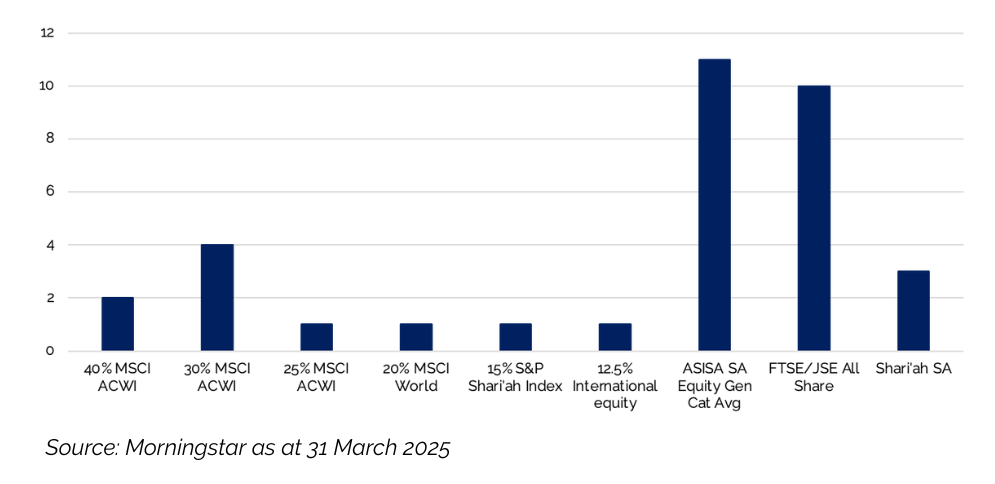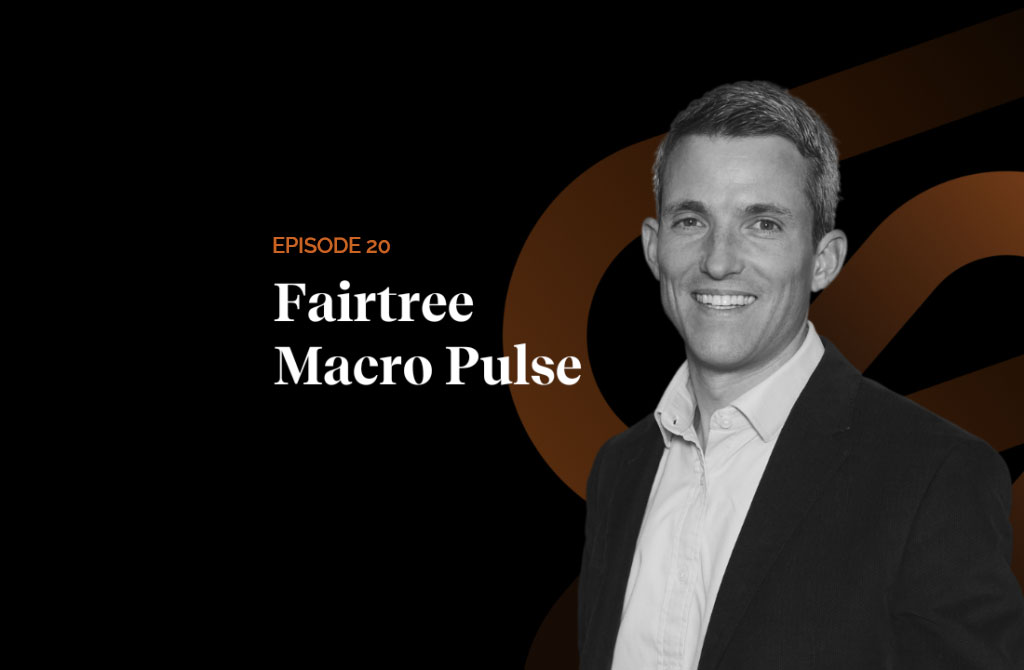In today’s increasingly complex investment landscape, comparing funds has become both more difficult and important. The recent ASISA category changes and continued variation in fund strategies have only reinforced the need for investors to ask a fundamental question: What benchmark is your manager using, and does it reflect how your capital is being invested?
The current landscape:
Recent changes to ASISA’s Fund Classification Standard, which became effective on 1 October 2024, saw the introduction of a new category, the SA Equity – SA General category (“SA Equity Category”), in addition to the existing SA Equity – General Category (“General Equity Category”). This new category is for portfolios that invest exclusively in South African equities. This update is a positive step forward, partly prompted by the SARB’s increase in offshore limits to 45% for institutional investors. However, even within the revised General Equity Category, meaningful comparison remains a challenge due to benchmark misalignment.
Why benchmarks matter:
A benchmark is more than just a point of reference; it’s a standard by which fund performance is measured. However, when a fund’s benchmark doesn’t align with its strategy, particularly its level of offshore exposure, performance comparisons can be misleading.
Breaking down the benchmark
Lack of offshore exposure:
Despite ASISA’s efforts to enhance comparability, there is a significant variation in offshore allocations in the General Equity Category. We have observed that:
- Approximately 40% of funds have no offshore exposure
- Approximately 30% have less than 20% offshore exposure
- Only 30% have offshore exposure exceeding 20%
This wide dispersion in allocation makes direct comparisons difficult, especially when many funds still benchmark themselves to indices that don’t reflect any global exposure.
Benchmark misalignment:
Among the 34 funds with offshore exposure exceeding 20%, 13 utilise benchmarks focused solely on South African equities, lacking any global equity component. 11 funds use the General Category average, which, as noted earlier, is predominantly South African equities. This misalignment can lead to inaccurate performance assessments.
Graph 1: Benchmark allocation of the funds with more than 20% offshore exposure

Fairtree Blended Equity Prescient Fund
Accurate performance measurement begins with a benchmark that reflects the actual investment strategy. That’s why the Fairtree Blended Equity Prescient Fund (“the Fund”) uses a composite benchmark of 60% Capped SWIX and 40% MSCI ACWI. This benchmark aligns with our strategic asset allocation. This Fund is built on the award-winning foundations of two proven strategies, the Fairtree SA Equity Prescient Fund and the Fairtree Global Equity Prescient Feeder Fund.
By integrating these into a single, cohesive strategy, the Fund offers:
- Enhanced access to a broader universe of opportunities gives exposure to higher-growth, quality and liquid companies.
- Elimination of duplication/missed themes when using a building block approach.
- Efficient and agile asset allocation due to the flat decision-making structure.
- Leveraging the best ideas of the successful local and global equity teams.
- Less foreign exchange volatility than accessing a 100% global equity fund.
In its first year, the Fund exceeded expectations, outperforming both the standalone Fairtree SA Equity Prescient Fund and the Fairtree Global Equity Prescient Feeder Fund. This strong performance demonstrates the value of an integrated investment approach, ensuring consistent returns while minimising risk.
The Fairtree Blended Equity Prescient Fund brings together our local and global equity expertise in a single, integrated strategy, measured against a benchmark that accurately reflects its investment strategy and objectives. This ensures meaningful performance comparisons and a clear understanding of how your capital is being managed.
Topics
We are Fairtree
Subscribe to our newsletter
Stay informed with the latest insights and updates. Subscribe to our newsletter for expert analysis, market trends, and investment strategies delivered straight to your inbox.
"*" indicates required fields

FAIRTREE INSIGHTS
You may also be interested in
Explore more commentaries from our thought leaders, offering in-depth analysis, market trends and expert analysis.

Macro Pulse Episode 21
In this episode Jacobus discusses SA equities, SA bonds and the appreciating of the US dollar.

Fairtree Market Insights with Karena Naidu | Episode 8
In this episode, we dive into our Chinese exposure, exploring what’s happening with the major e-commerce players in China. We also take a closer look at the broader emerging markets space, unpacking key trends and where we’re seeing potential growth.

Macro Pulse Episode 20
In this episode, Jacobus discusses major events leading up to year-end, recent US court cases, and the rise in long bond yields.
About you…
By proceeding, I confirm that:
- To the best of my knowledge, and after making all necessary inquiries, I am permitted under the laws of my country of residence to access this site and the information it contains; and
- I have read, understood, and agree to be bound by the Terms and Conditions of Use described below.
- Please beware of fraudulent Whatsapp groups pretending to be affiliated with Fairtree or Fairtree staff members.
If you do not meet these requirements, or are unsure whether you do, please click “Decline” and do not continue.




